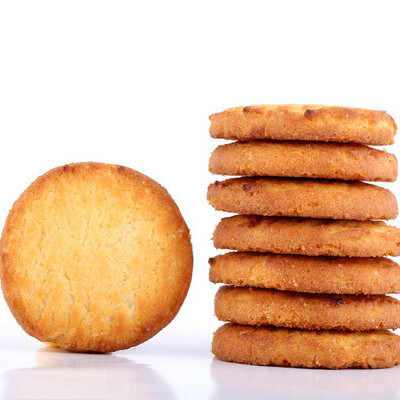
Sugar Cookies
Also known as Nazareth’s cookie
What is a Sugar Cookie?
Sugar cookies are one of the most popular and classic treats consumed in the United States. They are commonly made from sugar, butter, flour, eggs, vanilla and a leavening agent such as baking soda or baking powder, depending on the sugar type. Sugar cookies are usually decorated with frosting, sugar icings and sprinkles before consumption.1
Origin
The long history of manufacturing sugar cookies dates back to the 7th century in Persia. However, sugar cookies as known today were first made by Protestan settlers in the Nazareth colony in Pennsylvania in the 17th century. They were baked in the shape of the state symbol, a keystone.2
Currently, sugar cookies are commonly made by home bakers, supermarkets and industrial bakeries.
Ingredients
Sugar cookies are made with the following ingredients (based on 100% flour):1,3
| Ingredient | Function | Usage level (Baker’s percentage) |
|---|---|---|
| Sugar |
|
30 – 48% |
| Butter or shortening |
|
13 – 35 % |
| Flour |
|
100% |
| Eggs |
|
2 – 5% |
| Vanilla |
|
|
| Leavening Agents |
|
0.35 – 0.5 % |
Nutrition
Typical nutritional value of commercial basic sugar cookies per 100 g:4
| Component | Grams |
|---|---|
| Carbohydrate | 66.67 |
| Fat | 21.88 |
| Water | 9.37 |
| Protein | 2.08 |
Sugar cookies contribute 468 kcal per 100 g, making it a highly caloric product. The high sugar and high saturated fats in sugar cookies may have an undesirable contribution to increased risk of diabetes and obesity.4
Commercial production
Sugar cookies are industrially produced through the following process:1
- First mixing: butter and sugar are mixed for creaming followed by addition of the rest of the wet ingredients.
- Second mixing: flour is added to the wet mixture in the batch mixer.
- Sheetting and forming: the dough is flattened into an even thickness sheet with gauging rolls, and subsequently the cookie sheet is cut into the appropriate shape with an interchangeable roll or cutter.
- Baking: cookies are baked in a band or traveling oven.
- Cooling: two-tier cooling conveyors are used to cool baked cookies for 20 – 25 minutes.
- Packaging
Processing conditions
Some processing conditions to consider when making sugar cookies:1
- Temperature: optimal quality cookies are typically baked at 190 oC (374 oF).
- Mixing and kneading: cookie dough requires minimum kneading time to avoid gluten development.
- Thickness: increasing cookie thickness results in higher spread factor.
- Baking time: cookies baking time is typically 13 – 15 min.
Regulations
Sugar cookies made with GRAS ingredients do not have an established FDA regulation aside from the labeling of commonly consumed amounts per occasion of 30 g.5
In the EU, sugar cookies do not have a specific regulation and are recognized as safe for human consumption.
References
- Serna-Saldivar, Sergio O. Cereal grains: properties, processing, and nutritional attributes. CRC press, 2016.
- Smith, Andrew, and Bruce Kraig, eds. The Oxford encyclopedia of food and drink in America. Vol. 1. Oxford University Press, 2013.
- Figoni, P. How Baking Works: Exploring The Fundamentals Of Baking Science. 2nd ed., John Wiley & Sons, Inc., 2008.
- U.S. Department of Agriculture, Agricultural Research Service. FoodData Central, 01 April 2019. https://fdc.nal.usda.gov/fdc-app.html#/food-details/561213/nutrients . Accessed 07 December 2020.
- Food and Drug Administration (FDA). US Department of Health and Human Services. CFR Code of Federal Regulations Title 21, Part 101 Food Labeling ,https://www.accessdata.fda.gov/scripts/cdrh/cfdocs/cfcfr/cfrsearch.cfm?fr=101.12 , Accessed 07 December 2020

